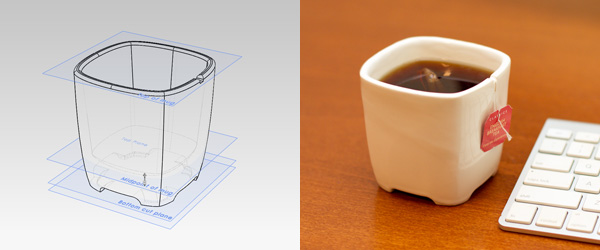Hello
Glen is a former generative artist who was lucky enough to design and build a few big things with amazing people at Google. He is currently living and planning his next thing in his hometown of Melbourne, Australia.
A selection of projects appear below. More frequent and random updates appear on Twitter and Mastodon.
A selection of projects appear below. More frequent and random updates appear on Twitter and Mastodon.
Android and Pixel 2015-2021

Ran the Android UX team for versions 6 through 12, as well as Pixel 1 to 6. Also lead the design teams responsible for the middle versions of Android Auto, Wear, TV, and Studio.
Chrome + ChromeOS2006-2018

Lead the design of Chrome and Chrome OS for twelve years, engineered large chunks of the original Windows frontend, and took it from zero to billions of users.
DR2 2018

Designed a 1.9g frame and 0.4g camera mount to create a 25g FPV quadcopter for minimal noise in park flying
Route 2012-Present

Route links events and commands on your network-aware devices; it's how you connect the things on the internet of things together and control them.
Flock 2011

A JavaScript experiment to see how many flocking particles I could put on screen at once.
DropMocks 2010
A weekend hack turned large. DropMocks was built in a sleepless marathon to show off how HTML5 drag and drop could be used to make a compelling image sharing service. It stuck around a bit longer than I thought it ever would, and the code has gone on to be used by a few startups who've done bigger and better things.
Google Browser Sync 2006 [Defunct]
My first real project at Google - a Firefox extension that let you sync your bookmarks, history, tabs and cookies across multiple computers. I joined late in the project and mostly just made a nuisance of myself while learning to never volunteer to work on sync code ever again.
ExplorerCanvas 2006

My first use of Google's "20% time". Along with Erik Arvidsson and Emil Eklund, I spent a few days making this open source utility to allow web developers to use Canvas on Internet Explorer by emulating it using VML. It ended up becoming enormously popular, though now that modern versions of Internet Explorer support canvas natively, it's no-longer needed.
Blogger Web Comments 2005 [Defunct]
My starter project at Google. I had five weeks to build and launch this Firefox extension that showed you comments from across the web about the site you were viewing.
Cut to Ribbons 2005
A projector based interactive installation artwork. The image processing code used two webcams to figure out the position of a object (such as a flashlight) and used that to generate ribbons in 3D space. It used red-blue glasses because I was cheap.
Duct Tape 2004

The game Doom 3 let you use your flashlight or your gun, but not both at the same time. This mod corrected that. This was one of the first mods for Doom 3, and filled enough of a gap that it was Slashdotted, Bluesnewsed, and downloaded 100,000 times in the first 24 hours.
Nano Floor 2004
Nano2 is a multi-user room-sized interactive installation created for the NANO exhibition at the Los Angeles County Museum of Art. It was commissioned by Victoria Vesna, Chair of Design | Media Art and Jim Gimzewski, Professor of Chemistry at The University of California, Los Angeles.
Nano2 takes the form of a projected floor covered in Carbon-60 molecules, otherwise known as buckminsterfullerines, or 'buckyballs' for short. By themselves, the buckyballs slowly roll together to form a hexagonal lattice. Collisions between buckyballs at speed result in snooker-ball like motion.
A vistor entering the area acts upon the buckyballs in the same way that the balls act upon each other, so children can run through swarms of buckyballs and disperse them as they would a flock of seagulls.
Nano2 takes the form of a projected floor covered in Carbon-60 molecules, otherwise known as buckminsterfullerines, or 'buckyballs' for short. By themselves, the buckyballs slowly roll together to form a hexagonal lattice. Collisions between buckyballs at speed result in snooker-ball like motion.
A vistor entering the area acts upon the buckyballs in the same way that the balls act upon each other, so children can run through swarms of buckyballs and disperse them as they would a flock of seagulls.
Freelook 2003
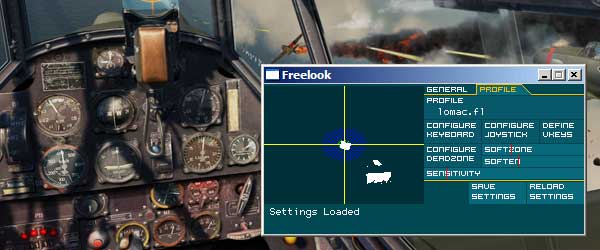
Freelook is computer-vision software that allows you to use movements of your head to accurately control your mouse cursor. This translates to hands-free viewpoint control in games (you can look around your car or plane by moving your head slightly), as well as providing a mouse alternative for handicapped users. Freelook is similar in execution to the excellent cam2pan and TrackIR systems, although unlike the latter, Freelook only requires a cheap off-the-shelf webcam.
Fluid Bodies / Mood Swings2003
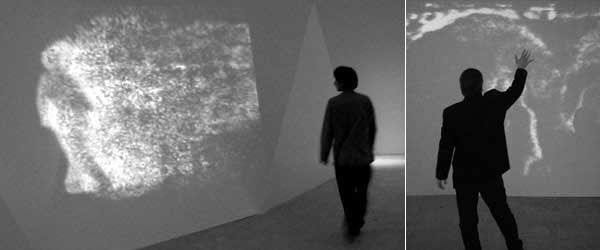
Fluid Bodies is a work developed in collaboration with Victoria Vesna and Jim Gimzewski of UCLA. It ties together computer vision and fluid simulations to show a reflection of the future hidden worlds of nanotechnology.
Fluid Bodies has been exhibited in customized and differing forms at:
Fluid Bodies has been exhibited in customized and differing forms at:
- Nano, Los Angeles County Museum of Art, 2003-2004
- The Sublime Project, Phatspace@Projekt, Sydney. 2005
- Apeejay Media Gallery, New Delhi, 2005 (as Cell Ghosts)
- Crash and Flow, Seoul-Shinchon Art Festival, Seodaemun Prison, Seoul, Korea, 2004 (as Cell Ghosts)
- Crash and Flow, Seoul-Shinchon Art Festival, Red Gate Gallery, Beijing, China, 2003 (as Cell Ghosts)
- Ladyfest Berlin, 2005 (as Mood Swings)
- Cyberfem. EACC, Spain. 2007 (as Mood Swings)
- Inside Out Loud, Mildred Lane Kemper Art Museum. 2005 (as Mood Swings)
- Swabian Castle, Trani, Confini, Rome. 2004 (as Balkan Ghosts)
- The Art of the Mediterranean, MACRO, Museum of Contemporary Art, Rome. 2004 (as Balkan Ghosts)
Augment 1 & 2 2003
In 2003, I was convinced that Augmented Reality was the future, and spent a week producing a proof of concept that I demoed at the Unite meetup in Melbourne. Rather than use the now-ubiquitous squares, I hacked together my own marker system based on circles because the math was easier and circles looked nicer.
System C1 2003

A head up display for my car; it used a vacuum fluorescent display, a handheld GPS, a laptop under the seat, and a small Python script.
System B1 2003

An LED-based mouse control system inspired by Minority Report. It's software, a webcam, and a hand-hacked-together velcro-and-solder glove with LEDs and buttons on it. Though it worked, it mostly only succeeded in convincing everyone that I was a giant nerd.
Europa 2002

I was bored and in love, so I wrote this Processing applet. It ended up in a few magazines, and there's a screensaver version floating around out there somewhere.
We got married eight years later.
We got married eight years later.
Bezekric 2002
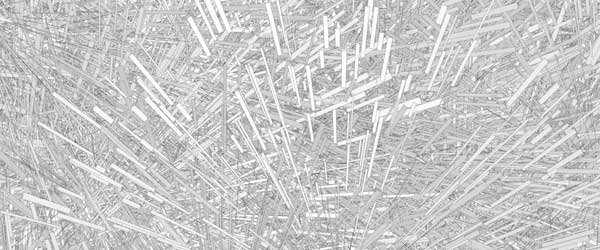
Bezekric was a generative artwork piece that was exhibited at Abstraction_Now, Künstlerhaus, Vienna and at White Noise, ACMI, Melbourne.
Systems A1 & A2 2002

These experiments into wearable computing involved finding ways to control music playback from external devices - in this case a Griffin Powermate or a Bluetooth phone. The headphones-plugged-into-a-laptop-in-a-backpack-controlled-by-my-phone System A2 was the best seven-pound, 3-hour-battery-life, 'portable' MP3 player of 2002.
E-site 2002
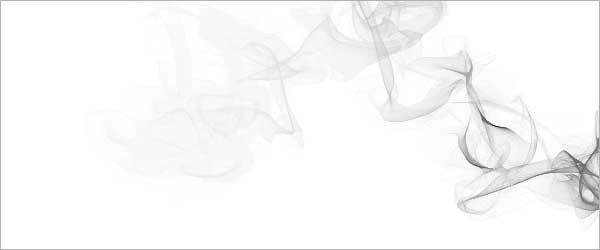
This piece was commissioned by a magazine as a tutorial for Java developers. It was exhibited online by the National Gallery of Australia. When viewed on a modern computer, this applet demonstrates my complete lack of foresight when it came to controlling run speed - computers get faster over time, who knew?
Bodytag 2002
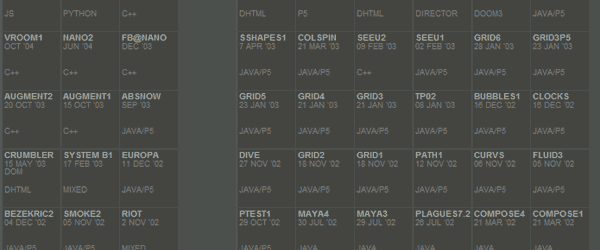
Bodytag was the place I dumped all my experiments and work for many years. Many of the things on it are now comically out of date, but it's where I played, and is special to me.
Earlier 1997
riot.com.au
I used to write computer game reviews for one of Australia's first gaming websites; after the site went under new management, I made my own. It's what lead me to web development.
Quake-C
I wrote mods for Quake. Though I'd always been a hobby programmer, this is what gave me the feedback loop I needed to fall truely and maddeningly in love with creating with text editors, Photoshop, and 3D Studio.

